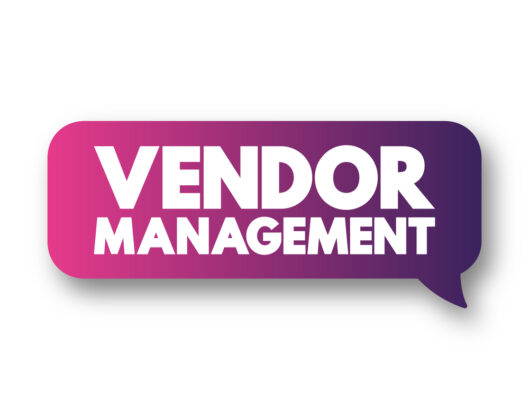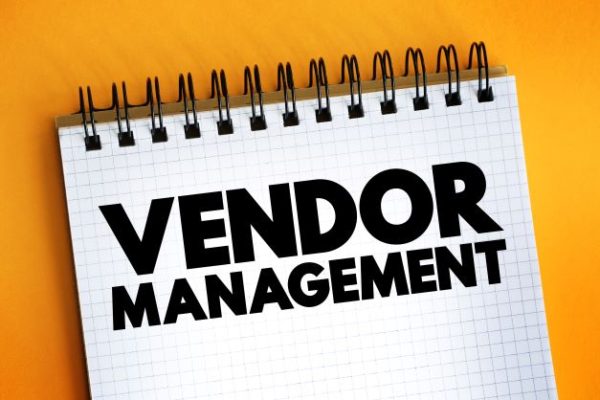Third-party risk management is critical in today’s interconnected business landscape. A failure to comprehensively address third-party risk can expose an organization to a wide range of potential pitfalls, including data breaches, reputational damage, financial loss, and regulatory penalties.
Primarily, the strategic use of third parties allows organizations to leverage specialized expertise, gain competitive advantages, or reduce costs. However, with these benefits come potential risks.
For instance, if a third party suffers a security breach, it can expose sensitive customer or business data, causing financial harm and damaging the organisation’s reputation.
Therefore, effective third-party risk management enables an organization to predict, identify, assess, monitor and mitigate risks associated with third parties. It enhances visibility and control over third-party relationships, thus reducing exposure to risks.
The process also provides a framework for managing the complexity of multiple third-party relationships and helps maintain compliance with applicable regulations and standards.
Through integrating third-party risk management throughout the lifecycle of the relationship, from selection and onboarding to ongoing monitoring and offboarding, organizations can better anticipate and mitigate the potential impacts of third-party failures.
This proactive approach helps prevent operational disruptions, protects the organization’s brand reputation, and ensures business continuity.
Organizations are often held accountable for their third parties’ compliance failures in regulatory compliance. Hence, a robust third-party risk management strategy is essential to meet regulatory obligations and avoid significant penalties.
Effective third-party risk management is not just about preventing negative outcomes but also a strategic enabler that helps organizations safely leverage third-party relationships to enhance their competitive position.
Third party risk management has become increasingly important as businesses rely on third-party vendors for cost savings, expertise, and growth. However, utilizing third parties exposes organizations to various risks impacting their operations, reputation, and customers.
This article will explore the importance of third-party risk management by examining the need for risk mitigation, avoiding reputational damage, compliance with regulations, vendor due diligence, and protecting customer information.
We will discuss common problems organisations face in this area and provide actionable steps they can take to mitigate risks and protect themselves and their customers.

The Need for Risk Mitigation
To avoid operational, financial, regulatory, strategic, and reputational risks that poorly managed third parties can expose organizations to, organizations must establish a robust third-party governance framework with regular multi-dimensional reviews of each material third party necessary for risk mitigation.
This requires comprehensive risk assessments to identify potential outsourcing risks and implement appropriate controls. Organizations must also develop effective risk management strategies tailored to their needs and industry-specific compliance requirements.
Third-party relationships can introduce significant risks for organizations if not properly managed. To mitigate these risks, organizations must take a proactive approach by regularly reviewing each material third party’s performance against established standards.
This includes monitoring vendors’ adherence to contractual terms and conditions and implementing appropriate security measures to safeguard sensitive information.
Effective third-party risk management requires due diligence in vendor selection, ongoing monitoring and assessment of vendor performance, and implementation of appropriate controls to protect customer information.
Vendor Selection:
- Conduct a thorough background check on the vendor’s reputation, financial stability, and security posture.
- Evaluate their compliance with regulatory requirements and industry standards.
- Assess their ability to comply with your organization’s policies and procedures.
Ongoing Monitoring and Assessment:
- Monitor the vendor’s compliance with contractual obligations and service-level agreements.
- Conduct periodic security assessments and audits to ensure the vendor’s security controls are effective.
- Stay informed about any changes in the vendor’s business or security posture that may impact your organization.
Implementation of Appropriate Controls:
- Define security requirements and expectations in the vendor contract.
- Ensure that the vendor implements appropriate security controls to protect customer information.
- Establish an incident response and notification procedure in case of a security breach.
By investing in a practical third-party governance framework, organizations can reduce the likelihood of costly data breaches or other incidents that could result in regulatory fines, legal liability or damage to their reputation.
Managing third-party risks is ultimately about protecting the organization’s interests while maintaining positive business relationships.
Through careful selection and ongoing due diligence efforts, organizations can ensure they work with trustworthy partners who share their commitment to cybersecurity best practices and compliance with applicable regulations.
With a comprehensive approach incorporating vendor monitoring, formalized reporting, and metrics systems, organizations can achieve greater maturity in their third-party risk management practices while ensuring the continuity of operations even in the face of unexpected disruptions or incidents.
Avoiding Reputational Damage
Mitigating potential harm to an organization’s public image and brand integrity is critical to ensuring the viability of business operations. Third-party risk management is crucial in avoiding reputational damage, as it involves analyzing and controlling risks associated with outsourcing to third-party vendors or service providers.
Any third-party risk management program aims to reduce cybersecurity, operational, legal, regulatory, reputational, financial, and strategic risks.
To understand the importance of mitigating reputational damage through effective third-party risk management programs, consider negative publicity’s impact on an organization’s stakeholders.
In today’s era of social media and 24-hour news cycles, it only takes one data breach or supply chain attack to erode stakeholder trust in an organization’s ability to safeguard sensitive information.
This loss of trust can have far-reaching consequences for companies’ bottom lines, from lost sales and revenue streams to costly legal fees and regulatory fines.
Effective third-party risk assessment processes are essential for reducing these risks by identifying potential vulnerabilities before they can be exploited. Through conducting due diligence on third-party vendors or service providers before entrusting them with sensitive data or access to critical systems,
Organizations can mitigate the likelihood of breaches or other disruptions that could negatively impact their reputation. Organizations can maintain stakeholder trust through regular monitoring and continuous improvement efforts while enhancing their overall cybersecurity posture.
| Aspect | Risk Description |
|---|---|
| Reputational Damage | Negative publicity |
| Stakeholder Trust | Erosion |
| Third-Party Risk Management | Mitigating Risks |
| Cybersecurity | Vulnerabilities |
| Data Breaches | Security Breach |
Third-party risk management is vital in protecting corporate brands by reducing cybersecurity threats and operational disruptions, among other risks.
Organizations that prioritize third-party risk assessment processes and continuously monitor their vendors or service providers can build stakeholder trust while effectively mitigating the potential harm of negative publicity.
Compliance with Regulations
Compliance with regulations is a fundamental aspect of third-party risk governance, as failure to adhere to legal requirements can result in severe consequences for organizations.
Regulatory requirements vary by industry and jurisdiction, but they all aim to protect consumers, stakeholders, and the public interest. Non-compliance may result in regulatory fines, reputational damage, loss of business opportunities, legal action, or criminal liability.
Therefore, organizations must clearly understand applicable regulations and ensure their third-party risk management program aligns with compliance frameworks.
Organizations must implement robust risk assessment methodologies that include all material third parties to achieve audit readiness and demonstrate compliance with regulatory requirements.
Risk assessments must evaluate the inherent risks associated with outsourcing activities and determine the appropriate level of due diligence required for each vendor or service provider.
The assessment process should also identify any control gaps that need remediation before onboarding new vendors or renewing existing contracts. Additionally, periodic reviews should be conducted to monitor changes in vendor operations or the regulatory landscape that may impact risk levels.
Effective third-party risk management requires adherence to regulatory requirements through comprehensive compliance frameworks and risk assessment methodologies.
Implementing these practices proactively rather than responding to incidents when they occur will help organizations avoid potential legal implications resulting from non-compliance with regulations.
Ultimately this approach will enable them to build strong relationships with their vendors while protecting themselves from reputational damage and financial losses associated with non-compliant behaviour by their partners within the extended enterprise ecosystem.
Vendor Due Diligence
Vendor due diligence is a crucial process for organizations to assess the suitability of potential vendors and ensure they meet specific cybersecurity standards. Third-party vetting involves extensive due diligence that evaluates the vendor’s security posture.
It includes cybersecurity practices, risk assessment techniques, and compliance with regulatory requirements. It also involves reviewing the vendor’s financial stability, reputation, and business continuity plans.
To effectively mitigate third-party risks, organizations should have a robust vendor due diligence process in place.
This process helps ensure that vendors are appropriately screened before being onboarded and continuously monitored throughout their organisational engagement. The table below outlines some essential components of an effective third-party vetting program:
| Component | Description |
|---|---|
| Risk Assessment | Evaluate all third parties’ cybersecurity measures and identify areas of improvement. |
| Security Posture Review | Establish contractual obligations to protect sensitive data or information shared by both parties. |
| Contractual Obligations | Monitor third-party activities regularly to detect any changes that may pose new risks. |
| Continuous Monitoring | Monitor third-party activities regularly to detect any changes that may pose new risks. |
Organizations must have a comprehensive plan to evaluate potential vendors thoroughly and ensure they meet specific cybersecurity standards.
Through this process, organizations can minimize the risks associated with outsourcing while protecting themselves from reputational damage or financial loss resulting from supply chain attacks or data breaches.
Protecting Customer Information
Protecting customer information is a top priority for organizations, and effective measures must be taken to safeguard sensitive data against potential breaches.
Third-party risk management is crucial in ensuring that customer data is secure, as third-party vendors often have access to critical information.
Without proper vendor due diligence and oversight, organizations face significant risk exposure relating to data privacy and security breaches.
Organizations should establish strict contractual requirements with third-party vendors regarding cybersecurity measures to mitigate these risks. Vendors should be required to adhere to specific standards of security and privacy practices when handling customer data.
Organizations can also monitor their vendors’ compliance with these standards through regular audits and assessments.
Implementing robust third-party risk management practices protects customer trust in an organization and helps prevent financial losses resulting from potential data breaches.
Organizations can ensure that their customers’ data remains secure at all times by prioritizing the protection of sensitive information through vendor due diligence and careful monitoring of vendor activities.

Frequently Asked Questions
What are some common challenges faced when implementing a third-party risk management program?
Implementing a third-party risk management program can be challenging due to communication hurdles, legal liabilities, resource allocation, vendor selection, and employee training.
These challenges need to be addressed for effective implementation of the program.
How can security ratings be used with other risk management techniques to improve third-party risk management?
Security ratings complement traditional risk assessment methods in third-party risk management.
They provide objective, real-time information on a vendor’s security controls and can guide risk assessment, auditing, vendor selection, contract negotiation, and continuous monitoring for enhanced cybersecurity posture.
What are some potential consequences of poorly managed third-party relationships?
Poorly managed third-party relationships may lead to legal ramifications, reputational damage, financial losses, operational disruption, and loss of customer trust.
These consequences can severely impact an organization’s overall performance and should be avoided through effective third-party risk management practices.
How can organizations ensure that their third-party vendors are following stringent cybersecurity practices?
Organizations can conduct vendor assessments, cybersecurity audits, due diligence checks, and compliance monitoring, including security posture as a contractual requirement during contract negotiations.
Are there any industry-specific compliance requirements that should be considered when developing a third-party governance framework?
It is essential to consider industry-specific compliance requirements. Vendor selection should involve due diligence, contract management, and risk assessment to ensure regulatory compliance and mitigate associated risks.

Conclusion
Third-party risk management is a crucial component of any organization’s operations. Failure to properly manage third-party risks can lead to reputational damage, financial losses, and legal or regulatory penalties.
To mitigate these risks, organizations must establish a robust governance framework that regularly reviews all material third parties.
Effective third-party risk management requires due diligence in vendor selection, ongoing monitoring and assessment of vendor performance, and implementation of appropriate controls to protect customer information.
Overall, effective third-party risk management requires a holistic approach that involves collaboration between different departments within your organization, including legal, procurement, IT, and security.
It also requires ongoing communication with the vendor to ensure they know your expectations and meet their contractual obligations.
Organizations must also ensure compliance with relevant regulations and standards while maintaining transparency and accountability. By taking proactive steps to manage third-party risks, organizations can safeguard their reputation and maintain the trust of their customers while achieving their growth objectives.

Chris Ekai is a Risk Management expert with over 10 years of experience in the field. He has a Master’s(MSc) degree in Risk Management from University of Portsmouth and is a CPA and Finance professional. He currently works as a Content Manager at Risk Publishing, writing about Enterprise Risk Management, Business Continuity Management and Project Management.

